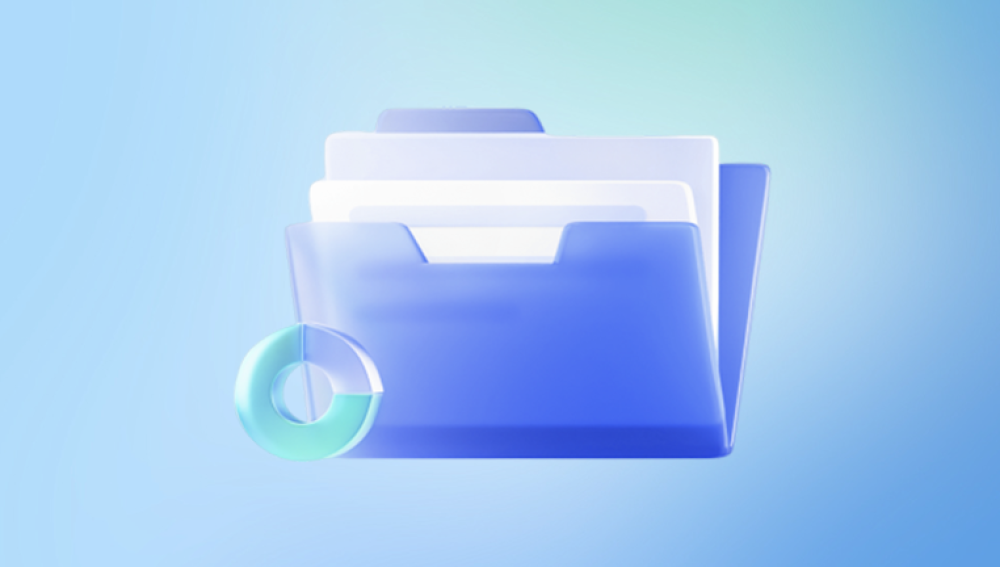When you delete a file from your computer or storage device, it doesn't immediately vanish. Instead, the operating system marks the space the file occupied as available for new data. Until new information is written over that space, the original file data typically remains intact and can be recovered. This is why it's critical to stop using the affected drive immediately after realizing a file has been deleted.
There are two main types of deletions:
Soft Deletion: This occurs when you delete a file using the Delete key or right-click menu. On Windows, these files usually go to the Recycle Bin, and on macOS, they move to the Trash. You can easily restore them unless the bin or trash has been emptied.
Hard Deletion: This happens when files are permanently removed using Shift + Delete, the Recycle Bin is emptied, or a formatting action takes place. Recovering these files typically requires third-party recovery software.

Types of Files That Can Be Recovered
Free file recovery programs can retrieve a wide range of deleted file types, including:
Documents: DOC, DOCX, XLS, XLSX, PPT, PDF, TXT
Photos and Images: JPG, PNG, GIF, BMP, RAW formats (CR2. NEF, etc.)
Audio: MP3. WAV, AAC, FLAC
Video: MP4. AVI, MOV, MKV
Compressed Archives: ZIP, RAR, 7Z
Emails and Database Files (depending on software capabilities)
The success of recovery depends on how long ago the file was deleted, the condition of the storage medium, and whether new data has overwritten the old file.
Best Practices for File Recovery
To increase your chances of successfully recovering deleted files, follow these best practices:
Stop using the drive immediately after deletion.
Use a different drive to install the recovery software to avoid overwriting deleted data.
Avoid saving recovered files to the same drive where they were lost.
Run a deep scan if the quick scan fails to locate your files.
Act quickly. The longer you wait, the greater the chance of your files being overwritten.
Top Free Programs to Retrieve Deleted Files
Below are some of the best free tools for retrieving deleted files. These programs vary in terms of features, supported file systems, and ease of use.
1. Drecov Data Recovery (Windows)
Drecov Data Recovery works by scanning your storage device for data that has been marked as deleted but not yet overwritten. When you delete a file, it doesn’t disappear right away. Instead, the operating system removes its reference, making the space it occupied available for new data. Until that space is overwritten, the file can still be recovered—and that’s exactly what Drecov Data Recovery takes advantage of.
Getting started is easy. After installing and launching the software, select the drive where the file was originally located. Choose between a Quick Scan for recent deletions or a Deep Scan for files deleted a while ago or after formatting. Once the scan completes, you’ll see a list of recoverable files. Drecov Data Recovery allows you to preview these files before recovering them, ensuring you're retrieving exactly what you need.
The software supports a wide range of file types and formats, from text documents and spreadsheets to images, audio files, and videos. It's also compatible with various file systems like NTFS, FAT32. and exFAT.
2. PhotoRec (Windows, macOS, Linux)
PhotoRec is an open-source tool that excels in deep recovery. Despite its name, it recovers more than just photos and works on many types of files and storage media. It works alongside TestDisk for partition recovery.
Key Features:
Works on FAT, NTFS, exFAT, ext2/ext3/ext4. HFS+
Powerful recovery engine
Works with memory cards, USB drives, and internal disks
Limitations:
Command-line interface may be intimidating for beginners
No file previews
3. Disk Drill (Windows, macOS)
Disk Drill offers a free version with a 500MB recovery limit on Windows. It's one of the most polished recovery tools with excellent usability.
Key Features:
User-friendly interface
Scan pause/resume options
Recovery Vault feature (proactive protection)
Limitations:
Recovery cap of 500MB on free version (Windows only)
Some features are locked behind a paywall
4. EaseUS Data Recovery Wizard Free (Windows, macOS)
EaseUS offers a free version that allows recovery of up to 2GB of data. It supports a wide array of file types and features a clean interface for beginners.
Key Features:
Quick and deep scan modes
Supports multiple file systems
Allows file previews
Limitations:
Limited to 2GB free recovery
Can be resource-intensive
5. TestDisk (Windows, macOS, Linux)
Developed by the same team as PhotoRec, TestDisk focuses on recovering lost partitions and fixing boot sectors. It’s highly powerful but requires some technical know-how.
Key Features:
Partition recovery
Fixes damaged file systems
Open-source
Limitations:
Text-based UI
Steep learning curve
How to Use Recuva: Step-by-Step Guide
Download and install Recuva from the official website.
Open the program and follow the Recovery Wizard prompts.
Choose the file type you're trying to recover.
Select the location where the file was last seen (e.g., Recycle Bin, specific folder).
Run the scan and wait for results.
Preview and select files for recovery.
Recover to a different storage location.
How to Use PhotoRec: Step-by-Step Guide
Download PhotoRec from the official CGSecurity site.
Extract and run the application with administrator privileges.
Select the drive or partition.
Choose the file system type.
Select the output folder (must be on another drive).
Start the scan.
Recovered files will appear in the specified output folder.
File Recovery on USB Drives and SD Cards
All of the tools listed above also work with removable storage like USB drives and SD cards. Recovery success on these devices depends on the same principles: avoid using the drive, use recovery tools promptly, and don’t save recovered files back to the same device.
Some tools also offer options for:
Recovering data from RAW drives
Repairing corrupted file systems
Restoring accidentally deleted partitions
Important Tips to Prevent Data Loss
While file recovery software is helpful, prevention is always better. Here are some tips:
Regular Backups: Use cloud storage or an external hard drive for scheduled backups.
Use File History (Windows) or Time Machine (macOS).
Enable the Recycle Bin confirmation to prevent accidental deletions.
Avoid force shutdowns or improper removal of USB drives.
Install antivirus software to guard against malware-related data loss.
Limitations of Free Recovery Tools
While free programs are often effective, they do have limitations:
Data limits on free versions
Fewer advanced features like damaged video repair or preview support
Lack of customer support
No guaranteed results
If your files are extremely valuable or you’re facing a physical drive failure, you may need to consider professional recovery services.




